DeLorean Fender Prices
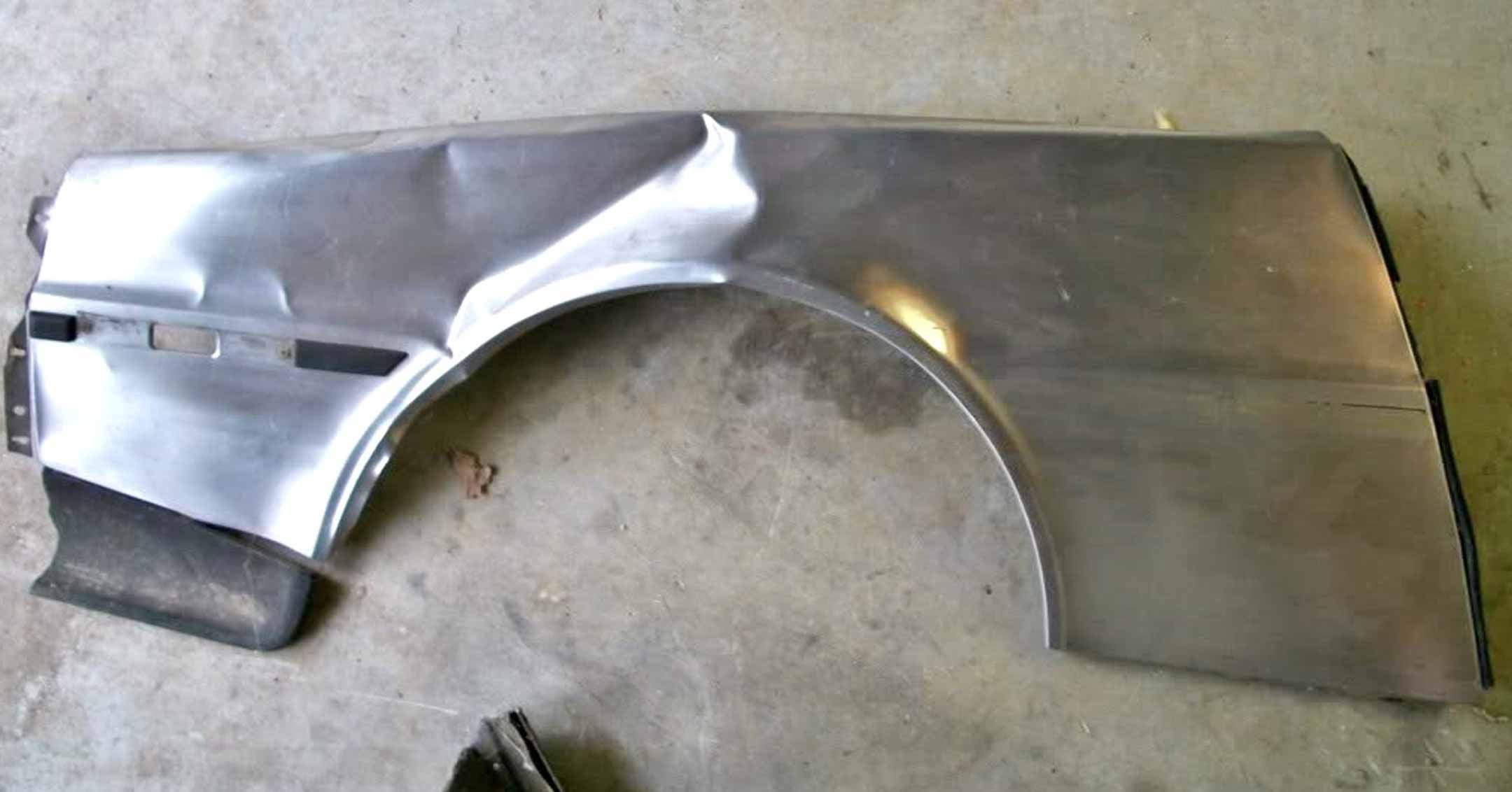
Did you know that in 2012, a front-right fender for a DeLorean costs about $900? But, at the same time, a front-left fender cost about… $3,500!? While Barrie Wills did not cover this specific question in his book, John Z, the Delorean & Me: Tales from an Insider (get it at DeLoreanGarage.com), he did share this information via email. Considering Barrie’s former position at DMC and his encyclopedic knowledge of the years when the DeLorean was being manufactured and sold, it seems we now have a definitive answer to the question about why front-left DeLorean fenders cost so much more than front-right fenders. Here’s Barrie’s response to the question: Please, share this page, and pass on these details so that we may correct the many years of incorrect information.
What does a DeLorean VIN mean?
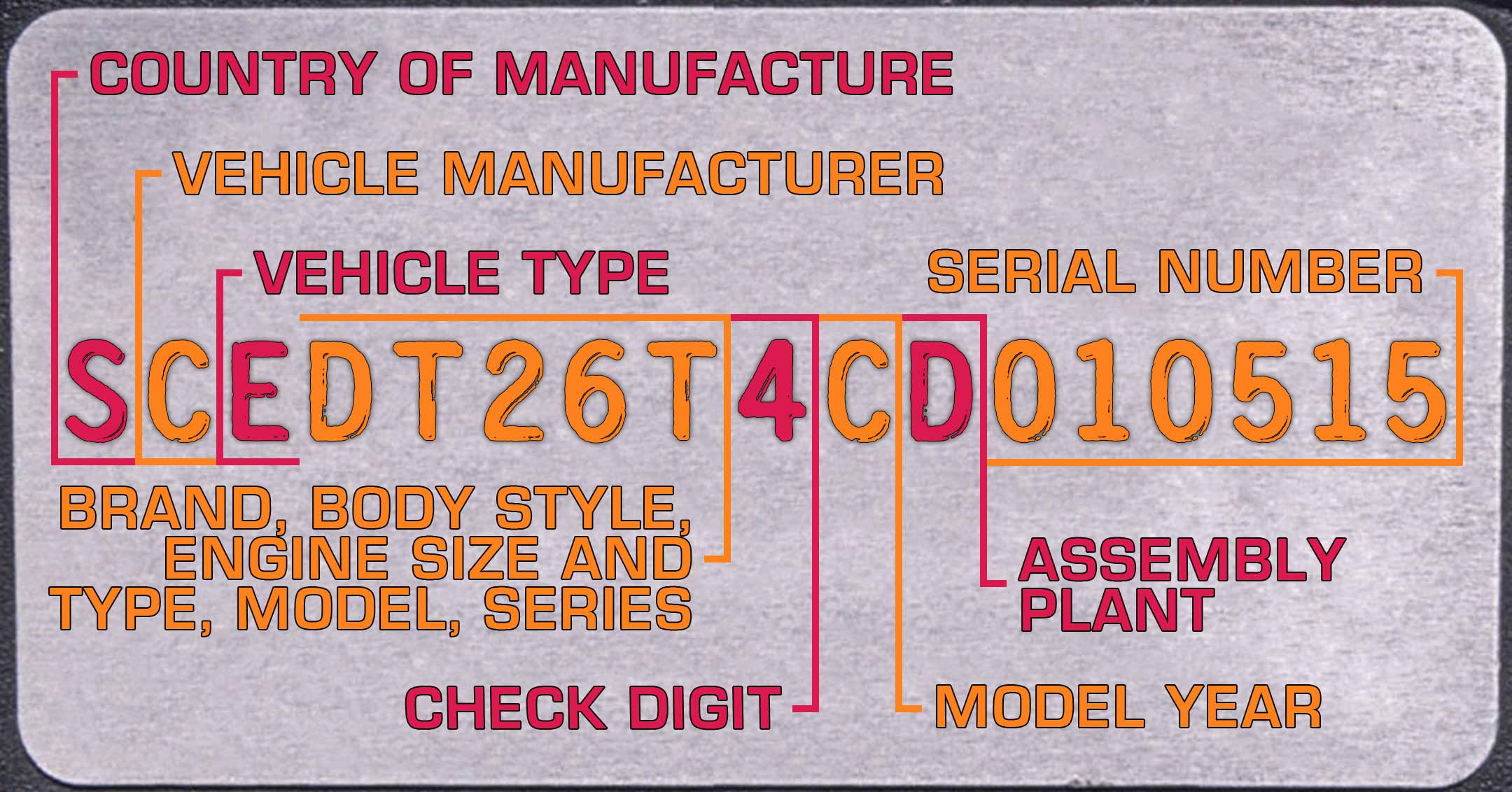
DeLorean VINs are no different than any other vehicle VIN out there. But, since there were so few DeLoreans built (9,080 to be precise, according to Barrie Wills) our VINs are almost identical, except for the mathematical check digit, and the ‘serial number’ of each car – that is, the last 5 digits. All DeLoreans were built in Dunmurry, Northern Ireland, and all were built in either 1981, 1982, or 1983. It’s also important to note that the ‘serial numbers’ jumped through the production years. The first manufactured vehicle is known as “500” (00500), and each car manufactured in 1981 had a (presumably) sequential number. The 1982 model year DeLoreans jumped the serial numbers to start at 10,000. And 1983 model year DeLoreans start at 15,000. Also interesting to note, is the “Month and year of manufacture” stamp. While all 1981 DeLoreans were built in 1981, early 1982 model cars were built in December of 1981. And the 1983 model cars were mostly built in mid-1982, but were unfinished when the factory was shut down. During receivership, those unfinished vehicles were completed and numbered with 15,000 and higher serial numbers. To understand more about how all vehicle VINs breakdown, here’s a re-print of an article from Research Maniacs:
Doing it Right: DeLorean RHD Conversion
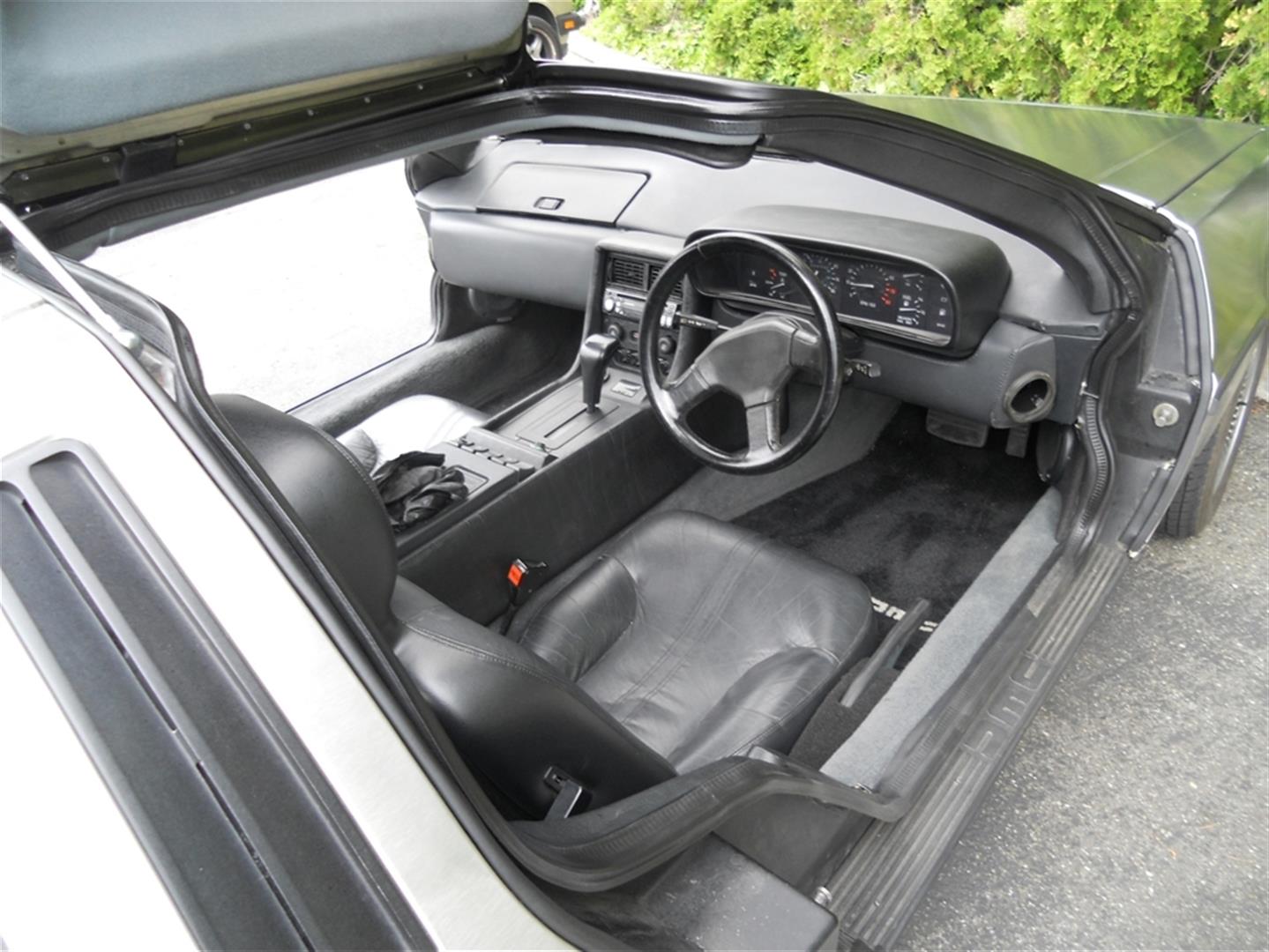
It takes so very much care and work to convert a car to right-hand drive, especially one that was never meant to be that way in the first place: stuff you’d never even necessarily think about has to be switched over, re-routed, and grafted in. I mentioned awhile back that Toby Peterson from DeLorean Parts & Service Northwest was converting an original ’81 DeLorean for an Australian customer, and now it’s finished and he’s written up an overview of the procedure for the Pacific Northwest DeLorean Club newsletter. It’s reproduced in its entirety below the jump. Take a look! RIGHT HAND DRIVE CONVERSION, OR HOW TO FLIP A DELOREAN by Toby Peterson Many local members have followed with interest a project that we recently completed at DeLorean Motor Company Northwest (www.dmcnorthwest.com). The project involved taking a normal DeLorean and converting it to a fully-realized right hand drive DeLorean. This DeLorean was purchased by one of our newest international members back in late 2010, and the plan was to perform the right hand drive (RHD) conversion and then ship the car to its new home near Brisbane, Queensland (Australia). We set a lofty goal of completing the conversion, along with numerous other repairs and upgrades, by April of this year. As it turned out, the project took considerably longer than expected. The car was picked up by the transport company on August 12th, leaving a large hole in the collection of cars at the shop. There were no RHD DeLoreans built in the original factory. A total of 16 cars were taken through a “factory authorized” conversion – 13 black interior cars were done by a company called Wooler-Hodec Ltd., based in Hampshire, England. Three other cars were converted by another company with different methods used as compared to the Wooler-Hodec cars. These are called the “AXI cars”. Of note … according to Wikipedia, only one of the factory authorized conversions had an automatic transmission. This means that there was only one factory authorized RHD black interior automatic car in existence at that time. The Car – We started with a “typical” 1981 DeLorean sporting a black interior and automatic transmission. The car is an early VIN with dark gray wheels, and hadn’t been licensed since 1997. This meant that there would be a great deal of repair and maintenance needed, in addition to the conversion work, in order to have a DeLorean that would be reliable and road-worthy. The stainless steel panels were in decent condition, with a few dings and dents suffered during its first 30 years of existence. The frame and underbody were good, with no significant rust or other damage. The various systems (brakes, cooling, electrical, and fuel) had the range of issues that we would expect from a car that had not been regularly driven in 14 years. The windshield had minor damage which eventually led to a replacement. Getting started – We decided to keep the repair and restoration portions of the project separate from the RHD conversion portion. There were many overlaps, of course. We completed a minimum number of repairs to allow the car to be started and driven around for a functional evaluation. When the car was drivable, we performed a Full Technical Inspection (FTI) in order to document the condition of the many systems and components in the car. With the report in hand that detailed all the issues that would need to be addressed for full functionality of the basic vehicle, we began the process of disassembly. The following list of original parts would not be used in the final converted car – steering rack, HVAC air distribution box, dash board, knee pads, windshield wiper arms, and about 1/4 of the main wiring harness. These parts and components were removed, to be replaced by new parts suitable for the RHD configuration. Vehicle Controls – The Wooler-Hodec cars featured revised brake systems with the booster and master cylinder moved to the right side of the car. This allowed for direct connection to the relocated brake pedal. This method also required extensive modifications to the front fiberglass underbody, including moving the spare tire well to the left side of the trunk. We elected to leave the brake components in their original locations and utilize a sturdy torque tube and linkage system for brake controls. This minimized changes to the underbody, and didn’t require disturbing the previously certified and safety critical brake system. The pedal box and steering column assembly were moved over, and mounted to the revised firewall on the right side. A large bracket was fabricated in perfect alignment with the original brake controls, and a torque tube was fashioned to link the brake pedal to the brake master cylinder. The various control stalks on the steering column were left in the original configuration relative to the steering column. The emergency brake lever was moved from the far left side to the far right side. The wiring in the doors was transposed from one side to the other to allow for the exterior mirror controls to be on the right hand door. HVAC system – The rather large air distribution box in the DeLorean is located primarily in the center and right hand side under the dash board. This necessitated a change to allow for relocation of the pedal box to that side. The original assembly was scrapped, and replaced by an aftermarket self-contained HVAC system that could be fitted to the left side. The new air distribution box is smaller than the original, features all electronic controls (no more vacuum mode switch), and is more efficient than the original. One compromise with the new system is that it doesn’t have fresh air intakes, so all air conditioning is done with recirculated air. Australian law does not allow cars to be imported with any refrigerant installed in the A/C system, so this was left “dry” for that purpose. Windshield Wipers – These represented an interesting detail in this project. The
DELAUREN

Parking is the hassle in Manhattan, finding a legal space then fighting for it, recalling street-sweeping hours or dodging meter cops and delivery vans that buzzcut side mirrors. So if your doorman knows someone at a public garage, as Lauren Reilly’s does, and he lands you a $235-a-month deal in a town where rates approach $900, half the battle is won. It helps to pay your bill, however, a fact the cashier at this midtown garage is reminding Reilly, who’s determined to spring her car, tonight, gratis. “C’mon,” she pleads, “I’ll pay tomorrow, please, it’s important.” Finally he relents, and we stand with a dozen other New Yorkers awaiting their vehicles. Reilly paces in cargo-pocketed Capris, knee-high black boots with three- inch heels, and a long-sleeve T she’s designed with a prototype DeLorean silk-screened across her chest and GULLWING DOORS STAINLESS STEEL FLUX CAPACITOR ON THE FLOOR MODELS across her back. She’s a zaftig, Irish/Italian 29-year-old, with shoulder-length brown hair and a rakish smile. “That clerk is the crankiest of all,” she sighs, “the one person who’d say, ‘No you can’t have the car.’” She pouts. “I was worried I wouldn’t get to see her.” “Her” is Belinda, the 1981 DeLorean she bought in 2004 on eBay, for $13,000 (“I’ve put about $10,000 into her”), and who just this minute is rolling off the garage’s elevator, to the customary oohs and ahs. “Having a DeLorean is like being five percent a rock star,” Reilly says, popping the gulls. “That part gets me every time.” Except for an abrasion on its front bumper, the car looks pristine. Its plates read “New York, DELAUREN.” “I reserved that before I bought the car,” she says, then frowns. “Belinda’s a little dirty, which is why we’re taking her to the car wash.” Reilly slides in and we slip past theater traffic toward Broadway. “I named her Belinda after the singer, Belinda Carlisle,” she explains. “I wanted to give her an ’80s pop star name. I liked DeLoreans, from Back to the Future, and I’m into ’80s nostalgia. Part of that, of course, is my childhood.” She smiles. “Like, last night was my roommate’s 30th birthday, so we ate all this ’80s candy, like Nerds and Pop Rocks, we played all the music, like Blondie, the Go-Gos and Duran Duran, and we whipped out the Atari for Pac-Man and Pitfall. Afterward we went to Times Square for laser tag. The entire other team was 12-year-olds, who actually won. We decided we were too old to be chasing people around in the dark. We stayed there until about two, then we went to a bar until about four, then we went out for pizza. If I don’t see the sun come up, I don’t think it’s been a good night.” She swears at a taxi that’s cut her off, then adds, “That’s my philosophy on life.” New York born, having grown up on Long Island but residing in Manhattan for the past eight years, she does quality assurance/business analysis for a Soho marketing firm. Before 9/11, she worked at The World Financial Center in a complex that was partially destroyed. “My roommate’s building was destroyed. It was her fourth day in New York. She’d moved from Kansas. Her parents said, ‘Don’t move to New York, it’s dangerous there.’ And the fourth day, 9/11 happens.” Here in Times Square, with million-kilowatt signs flashing and the sidewalks jammed, all that seems decades removed. “There’s nowhere I love as much as New York,” Reilly says. “I’m a night person. I like the excitement and I like that there’s always something to do.” She veers toward the Hudson. “Cruising through Times Square is one of my favorite things. It feels like you’re somewhere.” The first day she drove Belinda, she broke down in the Square. “A cop was really nice about it. I didn’t even know how to jump her. I pulled the doors up, I had the trunk up… and people kept coming by. They thought it was a display. They’d say, ‘What are you here for?’ She exercises Belinda most weekends – on trips to Mohegan Sun, Atlantic City, Long Island, or just around Manhattan-in part to keep her battery charged. “In garages, batteries go dead. Once it took them 45 minutes to jump it, because they wouldn’t give me access. I’ve even had it die in the car wash. Which is why we’re circling now.” At West Street, hard by the river, a sign for West Side Parkway Car Wash looms. “If I leave her for more than a week in the garage, she’s filthy-it’s the dust, the soot. Let’s check this place.” She gets out, speaks with attendants, returns. “That sounded sketchy. The office was closed, but I could pay them. I’d rather just avoid it. If something happens to the car, they might say, ‘Oh, we weren’t open.’” She accelerates up 46t-h Street. “Here’s another one. Hey,” she calls, “is your office open?’ A Middle Eastern guy answers ‘It’s close.’” Then he bargains, but Reilly shakes her head. “I’m not really that insured,” she explains. “If anything happens to the car, I pay for it.” She backs into 11th Avenue, against oncoming traffic. “That’s one reason I’m a very careful driver.” We head toward Harlem and, we hope, car washes. Belinda runs smoothly. “Everything in this car is practically new,” Reilly says. “When I bought it, it was an absolute wreck. The windows wouldn’t roll down, the windshield was cracked, the radiator, water pump and tie rods were broken, the hoses had like molded. And every time 1 hit 55, the doors would fly open. I got really lucky driving it home. Now it’s in perfect mechanical condition.” We dodge an enormous, accordion-waist bus. Reilly snickers. “I’ve had quite a few times when I’ve had my battery die, though. One time I drove it in the Greenwich Village Halloween parade, with all my friends dressed as characters from the ’80s or from Back to
A Living Legend

https://www.forbes.com/forbes/2005/0919/090.html#1b13189f6299 Forbes.com Sep 19, 2005 Christopher Helman The last DeLorean rolled off the assembly line 23 years ago. But Stephen Wynne can build you one, better than new. John Z. Delorean died in March, 23 years after his sports car venture bit the dust. Yet DeLorean Motor Co. survives today, in ghostly form. This zombie was resurrected by Stephen Wynne, who acquired the name and the spare-parts inventory of the bankrupted company. He has a waiting list of fans eager to pay $40,000 for an overhauled specimen–renowned for its stainless-steel body and gull-wing doors–and a warehouse piled high with enough stuff to build 500 cars from scratch. It’s still a small business. Wynne, 49, earns an estimated $700,000 pretax on sales of $2.5 million. But there’s plenty of room for growth. In 1981 DeLorean buyers were drivers sensitive to style but not to price tags (the $27,500 is equivalent to today’s $61,500). Fans these days tend to be geekier types whose first exposure to the car was in the Back to the Future movies. Cool, yes; speedy, no. One way to bring more customers into the fold is to boost horsepower. At 135hp the DeLorean is less peppy than the average family sedan. Wynne now charges an extra $5,300 to soup up a model to 195hp. After a recent meeting with Gildo Pallanca Pastor, race-car driver and owner of a tiny car company in Monaco called Venturi, Wynne will soon be able to move up to a 300hp engine with better turbochargers and a wider exhaust system. That might cost an owner $10,000. “In time,” says Wynne, “we could even do 400hp for somebody who’s psycho enough.” Some might say the same of Wynne. In 1980 he immigrated to Los Angeles from Liverpool in the U.K. to help run a European car repair shop. A year later DeLorean launched his car factory in Dunmurry, Northern Ireland–and problems, like melted electrical systems, quickly emerged. “Because of a lack of competition we were doing good business [servicing DeLoreans],” says Wynne. Even after the motor company went bankrupt in 1982, Wynne and his partner had their hands full. They renamed the shop “DeLorean One” and opened a second garage in Houston in 1987. When the partnership soured eight years later, Wynne went his own way. What to call the new shop? Wynne discovered that while DeLorean Motor was still tied up in Chapter 11, registration of the company name had lapsed. Before grabbing the name and logo, he called John DeLorean, who told him, “I hope that you have better luck with it than I did.” Then he hit the jackpot. Like all DeLorean mechanics, Wynne had been buying replacement parts from Kapac Co., which had acquired the liquidated inventory from the Dunmurry factory. By 1996 Kapac decided to get out of the business, and Wynne started scraping together a bid. With a wealthy brother-in-law like John Hargreaves–who founded British retailer Matalan and taught Wynne how to run a business–Wynne thought he’d have it made. But when Hargreaves didn’t bite, Wynne talked a friend into investing, and in 1997 they acquired the entire warehouse and contents, in Columbus, Ohio, for less than $1 million. The retail value of those parts, Wynne says, is $35 million. He moved all those parts–50 truckloads‘ worth–to Houston three years ago, where they sit in a new 40,000-square-foot warehouse. Financed with family money and cash flow, the move and construction cost Wynne $1.2 million. Even with annual carrying costs of $100,000 a year (including interest payments, property taxes and utilities), every sale of parts is virtually found money. A fully overhauled car that Wynne sells for $40,000 starts with a dilapidated DeLorean, for which he pays maybe $10,000. Then his mechanics install parts that cost Wynne $6,000 or so. Throw in $7,000 in labor costs, plus overhead, and Wynne’s gross profit on a rebuilt model approaches $17,000. He can even make money on junked DeLoreans into which his guys put just enough work to get them running. Price: around $10,000. But you’ve still got to bring in the customers. “Everything we do is geared toward selling more parts,” says Wynne. “Unless you’ve got the marketing to do something with it, it’s a million dollars of trash.” That marketing consists of [their website], a showroom, warehouse tours and a quarterly magazine called DeLoreans, which gives owners step-by-step photographic instructions on how to install various parts themselves. Wynne has also licensed the DeLorean image and logo to Sony for use in the videogame Gran Turismo 4. There will be other markets for all those parts. In March Wynne sold his first DeLorean franchise to a customer in Florida whom he’s known for years. Still, the move initially made him a tad nervous: “It was like letting somebody take your wife out to dinner.”
Going Gold
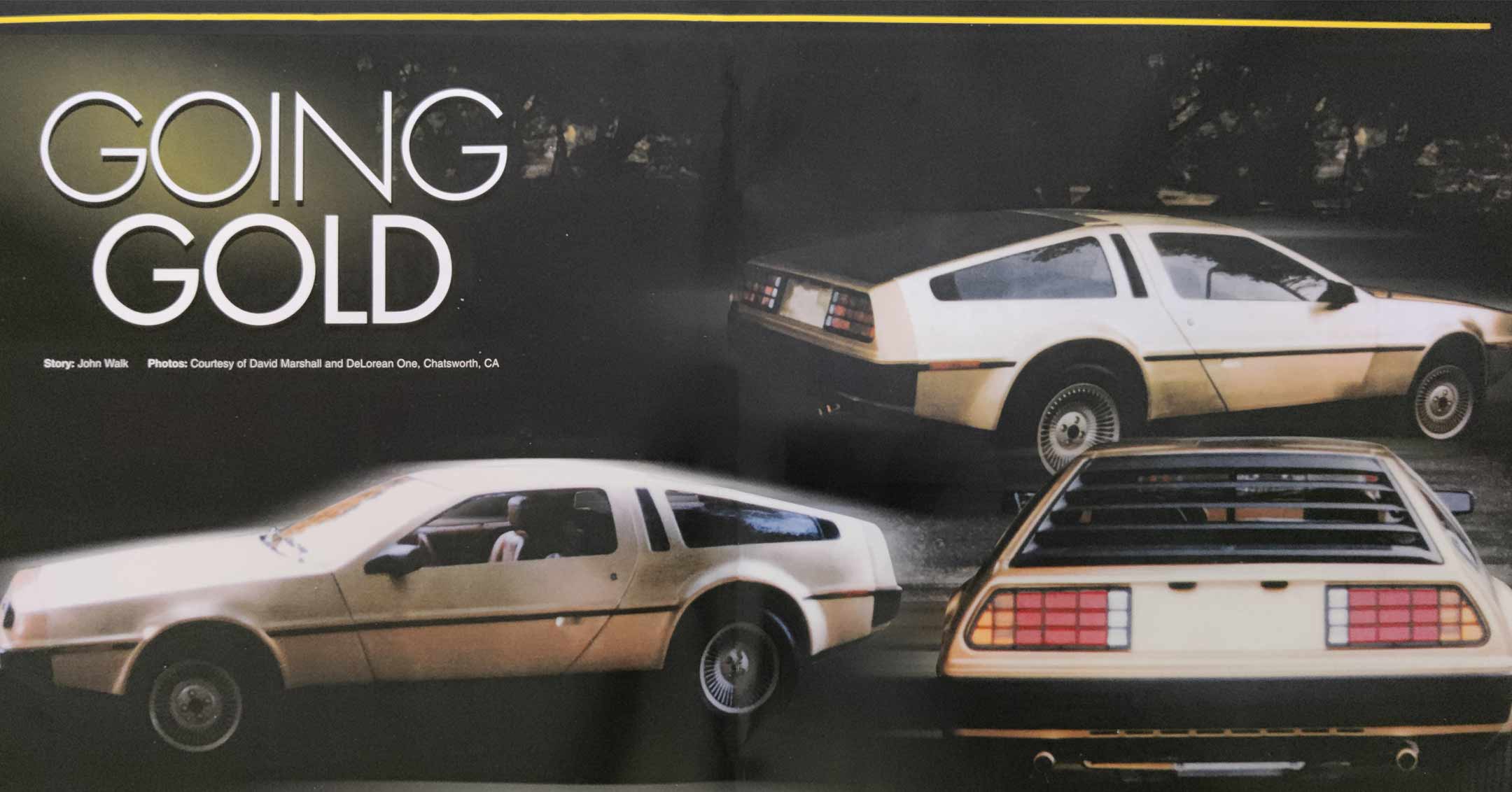
It was on sheer sentiment that David searched the internet this past winter for information on his father’s gold DeLorean. The last the family knew, it had been given to the William F. Harrah Automobile Foundation. The owner, Sherwood Marshall, had not seen his DeLorean since 1983 when his wife, Maureen, drove it to the back of a transport, prepping it for its journey to Harrah’s Automobile Museum, where it remained on loan until 1986. At the time, the couple lived in San Francisco. Marshall was involved in building, starting up and then selling convalescent hospitals and retirement centers. Maureen had first seen DeLoreans advertised in Harper’s Bizarre. She showed her husband. “He wanted a car just to go down to the office which was about six minutes away,” Maureen says, “and he thought the DeLorean would be great. It didn’t have to be painted. It got good mileage, and he wanted a sports car.” But Marshall had seen some advertisements of his own, particularly one in the 1980 American Express Christmas catalog. Sure it was pricier; but it was prettier. After all, why go steel when you can go gold? Without his wife’s knowledge, he put one gold DeLorean on his American Express card. Little did he know that he would receive the very first of the proposed 100 limited-edition, gold DeLoreans. At the factory in Ireland, orders were taken for only two gold cars. The second was purchased by Roger Mize, a banker in Texas. His secretary, Kate Owens, thought it would be oh-so-funny if her boss bought the car, and she teased him to get one. Mize considered the matter for a time and finally decided that gold was a good investment. In 1980 dollars, one gold DeLorean cost $85,000 – mere peanuts, equivalent to $215,871 in 2005. The flamboyant C.R. Brown, vice-president of marketing, lavished the cars as a bargain, saying that each represented a loss to DeLorean Motor Company in the tens of thousands of dollars. While the idea was tantalizing, the hype couldn’t match the company’s ambitious projections. With 100 gold cars a pipe dream, the factory assembled the dynamic golden duo, under guard and purchased one spare set of electroplated, 24 karat gold panels. These were a precaution, in case a reckless, speeding new owner put a teeny, tiny ding into the body. Of course, everything can be fixed, as Sherwood Marshall was told on the phone. Replacement front wheels cost only $318, rear wheels $364, fascias a petty $778, and the quarter panels a simple $4,705. To replace the T- panel cost $5,984, fenders cost a smidgen $5,990, and the door panel cost a pittance really – a bargain at $24,286. In 2005 money the equivalent rates are $807, $924, $1,975, $11,949, $15,197, $15,212, and $61,678 respectively. Had a clever thief left nothing but a shell of the DeLorean, total gold replacement would have cost $78,866 – or over $200,000 today. By 1981, Marshall had more or less forgotten about it until he received a call from New York. A man cheerfully asked him where he would like his gold DeLorean. “I asked when the car would be delivered,” Marshall says, “and he said it would take three days.” When Marshall realized the car was in Ireland, he asked how that was possible. The man told him they would fly the gold DeLorean right to him. All he needed was the name of a dealership that could take delivery. A Cadillac dealer near San Francisco International Airport said they’d be happy to receive it. On October 12, 1981, the Marshalls were presented with the keys to gold DeLorean SCEDT26T0BDD04300 and drove it off the lot. The idea of storing the car as a collectible didn’t occur to them. It was meant to be driven. “It really was a great car to drive,” Marshall remembers. “It was low to the ground and had lots of zip. It ran beautifully.” “We drove it in San Francisco,” Maureen says. “We drove it to Monterey and to Sonoma where some friends of ours had a winery.” For five months they drove gold in California. Everywhere they stopped – at traffic lights, parking lots and along streets, crowds would form. “That was the problem,” Maureen says. Privacy is a luxury more-afforded to those that don’t own DeLoreans, and gold made it worse. Still, the Marshalls zipped along the roads for five, happy months, despite their growing worries that vandals might try to scratch the metal. Gold DeLorean VIN 04301 enjoyed a less active legacy. Upon receiving it that same October, Mize promptly directed the removal of the front doors of Snyder National Bank in Snyder, Texas and had the car rolled into a glass vault. The DeLorean promptly took a nap for 24 years, snoring silently to the delight of thousands of awed onlookers who came from all over the world. In 2004, Mize’s daughters donated the car to the Petersen Automotive Museum in Los Angeles where it currently sleeps with only seven registered miles. A third, infamous gold DeLorean, VIN 20105, with its off-tinted, passengerside door panel, found its way into the possession of Carl Winters, who still owns it today. Disputed by some, the car has the reputation as being the last DeLorean ever produced’. Purists claim it’s not one of the factory-built gold cars intended for the American Express promotion. But some argue that three sets of gold panels were made and three gold cars were built. Consolidated International raffled the car off on December 16, 1985 and reported four million entries. A draftsman named Charley Greene won and quickly sold the DeLorean to Harry Kaufman Motorcars in Milwaukee, Wisconsin. A representative was sent to Columbus to drive the DeLorean back personally. Through a snowy blizzard, the car covered almost 450 miles that day. By the time ownership passed to Winters, the DeLorean had 605 miles and was never officially registered. Today, the Marshall DeLorean resides in the National Automobile Museum in Reno,
DeLorean Plans Comeback
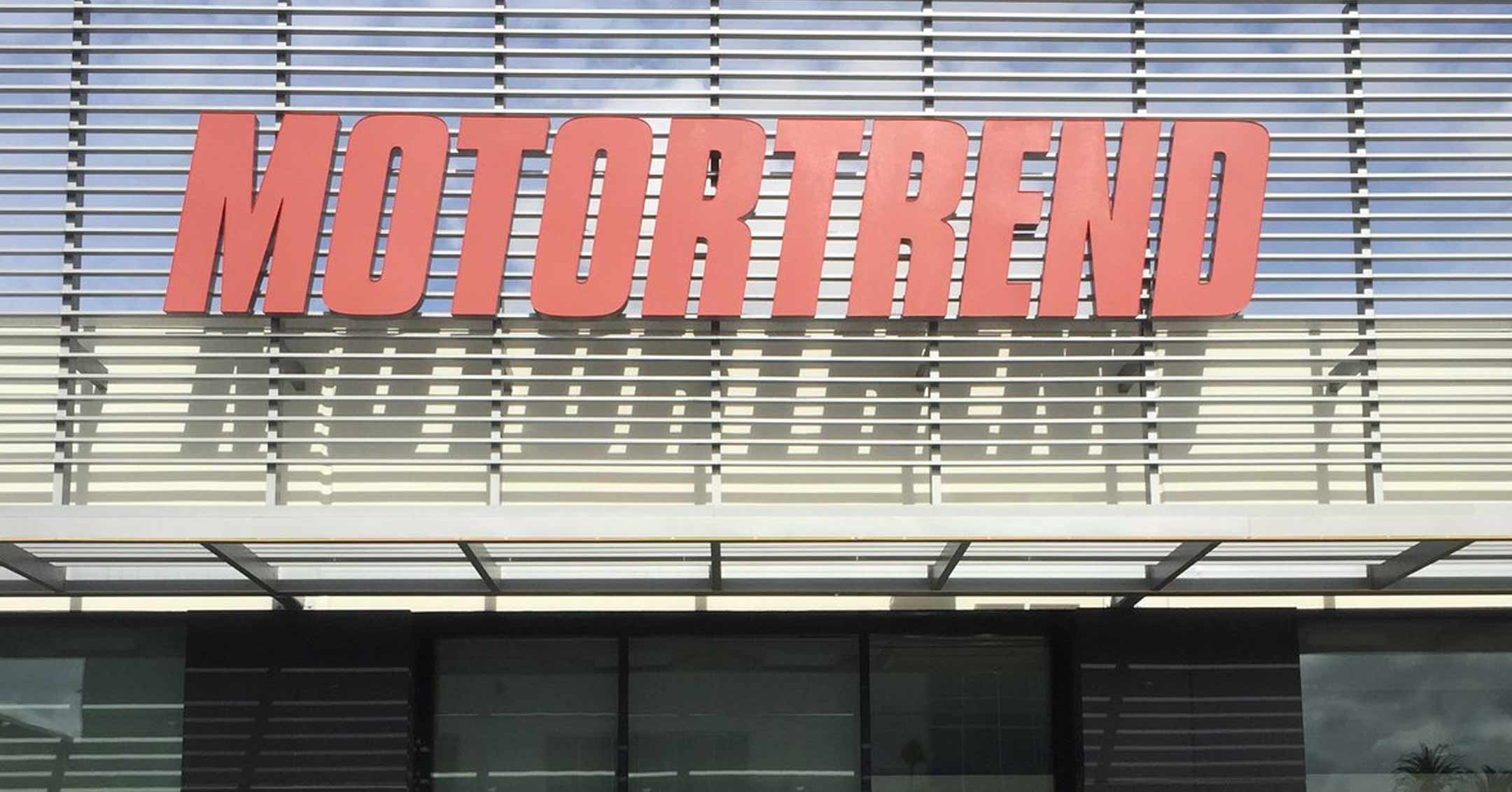
Controversial sports car tycoon John DeLorean claimed late January that he was “very near” to finalizing plans to produce another car. He denied that his latest venture revolves around the Firestar 500, the ugly duckling previously linked to his own name. “What I am working on now,” DeLorean told us from his $4 million apartment in New York, “is an entirely different car.” The silver-haired 61-year-old stated that a “well-known” German designer will style a $100,000-plus sports car for him. DeLorean, a “born-again” Christian, who last December was acquitted of major criminal charges for the second time in two and a half years, said, “Interest in investment is incredible. I’m getting letters from everywhere. We have a lot of opportunities.” He read over the telephone one such letter, “just received this morning from one of the wealthiest men in Canada,” offering assistance and production facilities in Alberta. “We have a couple sets of investments available to us,” said DeLorean, “and at the moment, we’re trying to decide which is the better of the two.” He has reportedly raised $20 million. The Firestar 500, trumpeted by one of its backers as “the fastest car in the world” while it was little more than a sketch on a napkin, was to have been based on the DeLorean DMC-12. A New Orleans businessman and self-proclaimed counter-intelligence agent, 48-year-old Gordon Novel, boasted partnership with DeLorean to produce the car. DeLorean told us that he had been introduced to novel by Marvin Katz, an entrepreneur who had bought surplus parts from the failed DMC-12 project, but that he had never agreed to involvement in the Firestar. “I just went along to listen to them,” he said. Novel reassures us, “John and I are still close friends and business associates.” Meantime, about $20 million of DeLorean’s assets have been frozen by court order pending the outcome of bankruptcy proceedings. The British government, as largest creditor in the case, would probably have obstructed any attempt by DeLorean to utilize in a new venture parts or patents belonging to the DMC-12. Motor Trend Magazine : volume 39 number 4 (April 1987) : p22
DeLorean Set To Build ‘Exotic’ Cars
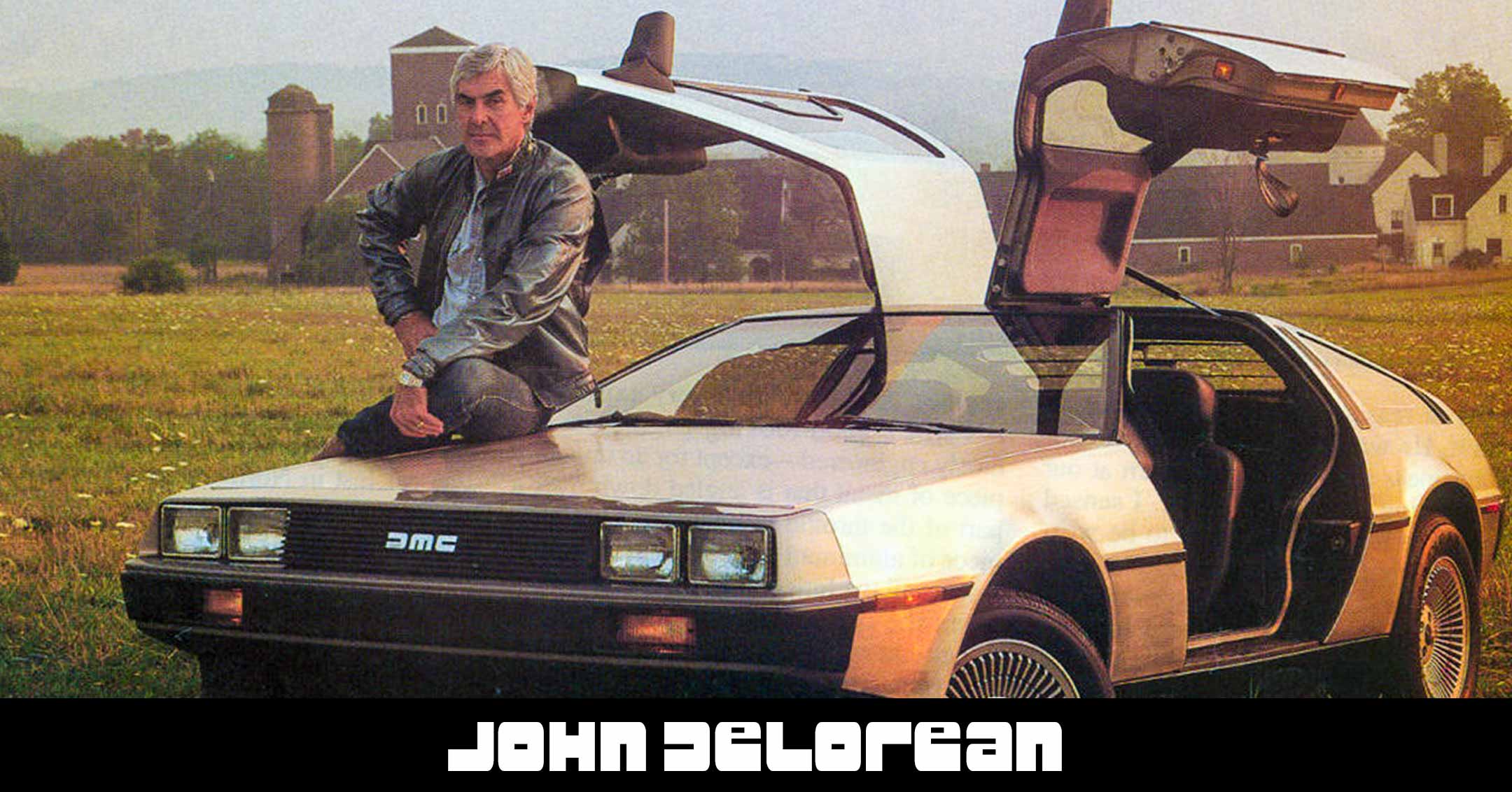
Twice acquitted of criminal offences, former auto maker John DeLorean says he is ready to start over with a new enterprise aimed at people who think of their cars more as toys than as transportation. “I’m looking to bring a high-performance, high-priced sports car into the market — I guess you would have to call it the exotic market — with a cost over $100,000 (U.S.).” Mr. DeLorean said he has raised the $20-million needed to build the new automobile, but he would not name the investors who put up the funds, or the well-known West German designer he said would take part in creating the car. A federal jury in Detroit last week acquitted Mr. DeLorean of charges that he embezzled $8.5-million (U.S.) from investors in his previous enterprise, which built a stainless-steel sports car at a plant in Northern Ireland in 1981 and 1982 before failing. It was his second successful defense against U.S. federal charges. A Los Angeles jury found him innocent in 1984 of trying to sell $24-million worth of cocaine. Mr. DeLorean, who turns 62 on Jan. 6, said he has lowered his ambitions since the collapse of his earlier project. “This is a much more modest venture,” he said, adding the $20-million in startup funds is less than the $27-million profit posted by his Northern Ireland enterprise the first half of 1981. Globe and Mail (Toronto) Newspaper – Metro Edition : December 24, 1986 : pB2
DeLorean Dream Dying
The boom that has hovered over the head of John Z. DeLorean since his cocaine-trafficking trial has finally been lowered by a federal grand jury in Detroit. DeLorean was the only one named in the 15-count indictment that charged him with racketeering, mail and wire fraud, interstate transportation of stolen money, income tax evasion, and causing false income tax returns to be filed. At the heart of the matter is some $17.65 million of DeLorean Motor Company funds that allegedly disappeared in an intricate investment scheme. The indictment comes on the heels of an announcement that DeLorean intends to build a new sports car. Based on the stainless steel-bodied sportster marketed in 1981 and 1982, the new car will use substantially more powerful engine which, says one of its backers, will make it “the fastest car in the world.” Dubbed the Firestar 500, the gullwing’s styling is similar to that of the earlier DeLorean, with wider front and rear fenders and an elevated rear wing not unlike that of a Plymouth Superbird. According to Gordon Novel, a New Orleans businessman and one of the backers in the venture, present plans call for the car to be powered by a 4-valve fuel-injected all-alloy V-8, expected to produce in the neighborhood of 500 hp. By lightening the previous DeLorean up to 500 lb, Novel expects the power-plant to propel the Firestar 500 from 0-60 in less than 4 sec and to a top speed of 220 mph with Boneville-type tires. Motor Trend Magazine : volume 38 number 1 (January 1986) : p17
DeLorean II: The Comeback
Who would bet money on an entrepreneur whose last company went bankrupt, who was tried and acquitted on charges of cocaine trafficking and who is being investigated for embezzlement? “An abundance of people,” says Walt Bratten, chairman of Castle Croup, a Newport Beach, Calif., investment firm. Bratten claims to be arranging financing for a new venture by John DeLorean, 60, the former General Motors executive whose first auto company collapsed in 1982. DeLorean has been working on the new project for about six months. He told the Los Angeles Herald Examiner that it was “inevitable that the company come back.” Tentative plans call for building a new sports car that would be similar to DeLorean’s previous model, a sleek machine with gull-wing doors. The new one would have an improved engine and transmission. Analysts doubt, however, that investors in DeLorean’s comeback attempt will ever see any profits. “I think it would be more fun to just go out and throw your money off the Brooklyn Bridge,” says David Healy, an auto company expert at Drexel Burnham Lambert. DeLorean is still under investigation for allegedly defrauding investors in his last company of millions of dollars. Time Magazine : June 17, 1985 : p63


